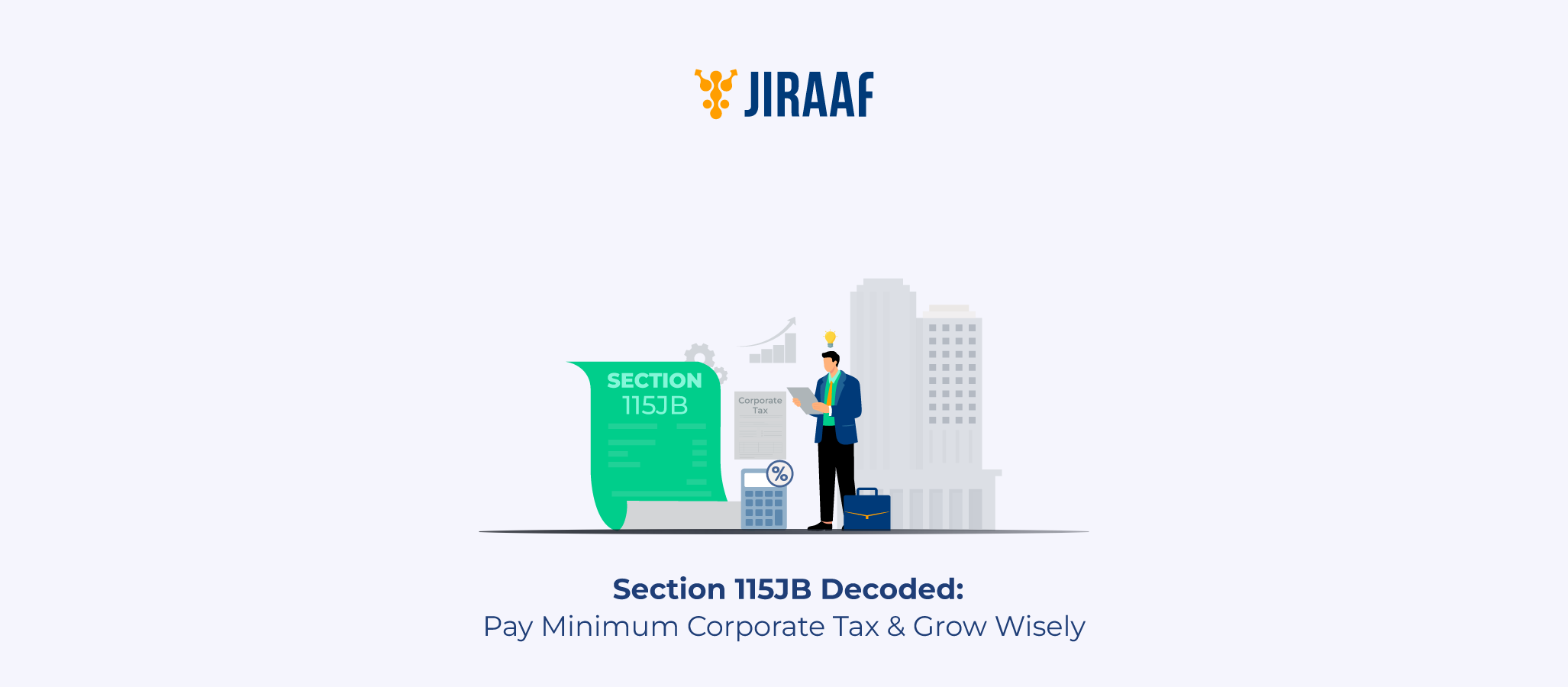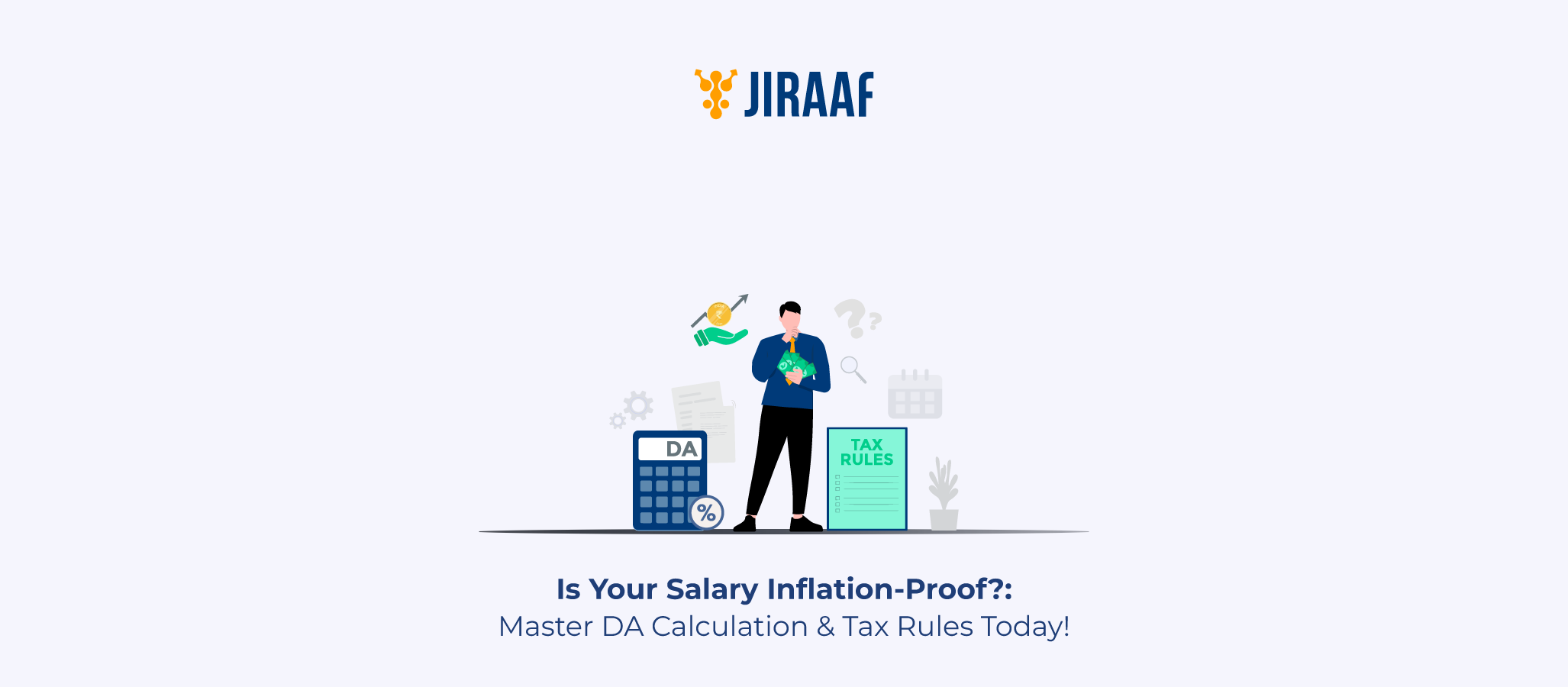India offers several tax breaks to corporations, be it incentives, deductions, or exemptions under Sections 10, 80, 32, and more. However, after using these breaks, companies may wind up with a zero-tax liability on their profits, which means no contribution to the nation’s revenue.
To address this, India introduced the Minimum Alternate Tax (MAT) framework through Section 115JB of the Income Tax Act. MAT ensures that companies with substantial book profits, even if they show zero taxable income due to exemptions, pay a minimum tax on their profits.
The principle is simple: if you generate profits, you must pay a minimum tax, regardless of the deductions claimed.
What Is Section 115JB? Understanding MAT
The minimum alternate tax is a provision that ensures companies with substantial book profits still pay a minimum level of tax, even if exemptions and deductions under the Income Tax Act reduce their regular taxable income. Introduced through the Finance Act of 2001, MAT was designed to prevent highly profitable companies from avoiding tax liabilities entirely. Since its inception, the MAT framework has evolved through several amendments, with changes in tax rates and calculation methodologies aimed at keeping the system fair and aligned with broader tax reforms.
Who is Liable for MAT under Section 115JB?
The following entities fall liable under Section 115JB of the IT Act.
- Domestic Companies: All resident companies, including manufacturing, trading, and non-profit trusts registered under Section 12AA, must evaluate MAT unless specifically exempted.
- Foreign Companies: These companies are taxable only if their income arises or is deemed to arise in India (e.g., through a permanent establishment).
- Exempt Entities:
- Some SEZ units, under certain conditions
- Companies enjoying profit-linked incentives
- Recently, specified foreign companies earning passive income structured through Indian entities
How to Calculate MAT Under Section 115JB
Here is a step-by-step breakdown of how you can calculate MAT under Section115JB.
1. Identify Book Profit
Start with net profit as per the audited financial statements.
2. Make Additions
Add back certain items like,
- Deferred tax
- Corporate social responsibility (CSR) expenses
- Provisions for bad debts
- Income tax paid
- Dissimilar depreciation as per tax law
Note: MAT ensures profit is computed in a way that reflects commercial reality.
3. Allow Deductions
Subtract items like
- Income that is exempt under Section 10
- Portion of depreciation disallowed or excessive
- Deductions for exports, reorganizations (e.g., AMT vs. MAT)
4. Apply MAT Rate
MAT is 15% of book profit, plus applicable surcharge and health & education cess.
5. Compute Normal Tax
Calculate the standard tax liability (e.g., 25%/30% plus surcharge). The final MAT liability is
MAT = Higher of [(Book Profit × 15%), Normal tax liability]
Key Adjustments in Book Profit Calculation [Detailed Table]
| Adjustment Type | Included in Book Profit? | Explanation |
| Net Profit (Financials) | Yes | Starting point |
| Add: CSR Expenditure | Yes | CSR is not deductible |
| Add: Transfer from Reserves | Yes | Deferred recognition |
| Add: Tax Paid | Yes | To align with accrual profit |
| Add: Free Reserves Transfer | Yes | Non-profit transfers |
| Deduct: Income Exempt u/s 10 | Yes | Exempt income deduction |
| Deduct: Depreciation Diff | Yes | GAAP vs IT Act differences |
| Deduct: Past year losses | Yes | Allowed up to book profit |
MAT Credit: Carrying Forward & Utilization
If a company pays MAT (say ₹15 crore) but its regular tax liability is calculated at ₹20 crore in a later year, it can use its MAT credit in different ways.
- Allowed carry-forward of up to 15 years
- Set-off against regular tax liability only, not MAT in subsequent years
- Once credit is used, unabsorbed MAT credit lapses
This allows companies to minimize double taxation over time.
Impact of MAT on SEZ Units & Startups
SEZ Units
- Historically exempt from MAT, helping exports and employment
- Recent Budget changes have removed the blanket MAT exemption
- These units now require individual evaluation based on incentives claimed
Startups
- Loss-making startups must still track book profit
- When they become profitable post-loss, they may have to pay MAT or normal tax, whichever is higher
MAT vs. Regular Corporate Tax—Which Applies When?
| Scenario | Regular Tax (25%/30%) | MAT (15%) |
| Profits with exemptions lowering the tax | Lower than 15% | MAT applies |
| Profits with no/lesser deductions | Above 15% | Regular tax applies |
Example
- Profit before deductions: ₹100 cr
- Deductions claimed: ₹85 cr → taxable income = ₹15 cr
- At 30% tax: ₹4.5 cr
- MAT is 15 cr × 15% = ₹2.25 cr → higher → MAT applies
- You can carry forward this ₹2.25 cr as MAT credit for future offset
MAT for Foreign Companies in India
MAT applies if,
- The foreign company has a permanent establishment in India
- A court-judgment (Castleton Investment Ltd.) reaffirmed MAT is constitutional
- Amendments in recent Finance Acts have narrowed scope to exclude passive income through affiliates and trusts
Reporting MAT in Your Tax Return
- ITR-6: The form for companies
- Schedules:
- Schedule BP (Book Profit)
- Schedule MAT (Tax Computation)
- Schedule MATC (MAT Credit Utilization)
- Audited Accounts are mandatory for compliance and MAT verification
Recent Amendments & Regulatory Changes
- Budget 2020 onward: MAT calculation now linked with Ind AS accounting
- Changes in surcharge and cess rates
- Inclusion of CSR, ESR, R&D incentives in book profit adjustments
- Modified exemptions for specified foreign earners through India
Common Errors & Pitfalls
Here are some common errors you should avoid making.
| Sr. No. | Mistake | Description | How to Avoid |
| 1 | Incorrect Calculation of Book Profit | Missing prescribed add-backs or deductions under Explanation 1 to Section 115JB. | Reconcile net profit with all MAT-specific adjustments; consult ICAI or tax professionals. |
| 2 | Ignoring CSR and Deferred Tax Adjustments | Failing to add back CSR and deferred tax while computing book profit. | Use a compliance checklist to ensure these are included in MAT calculations. |
| 3 | MAT Credit Not Claimed or Tracked | Companies let MAT credit lapse after 15 years due to poor tracking. | Maintain a year-wise MAT credit ledger and review it before filing returns. |
| 4 | Using the Wrong ITR Form or Omitting Schedules | Incorrect use of ITR forms or leaving Schedule MAT/MATC blank. | Use ITR-6 for companies and ensure Schedule MAT & MATC are filled accurately. |
| 5 | Non-Compliance with Financial Audit Requirements | Filing unaudited financials or failing to reconcile audited profits. | Ensure statutory audit is completed and MAT computations are audit compliant. |
| 6 | Misunderstanding Applicability for Foreign Companies | Foreign companies mistakenly assume MAT doesn’t apply to them. | Assess MAT applicability if the company has a business connection or PE in India. |
| 7 | Overlooking MAT for SEZ or Startup Units | Assuming automatic MAT exemption for SEZ/startup entities. | Recheck exemptions annually based on updated Finance Act and CBDT notifications. |
| 8 | Delayed Filing of Returns with MAT Liability | Filing after the due date leads to loss of MAT credit carry-forward. | Prioritize MAT return deadlines and set internal reminders. |
| 9 | MAT Credit Misreporting Between Group Companies | Trying to offset tax liability across group entities using one company’s MAT credit. | Maintain company-wise MAT credit tracking; inter-company transfer is not allowed. |
| 10 | Treating MAT as a Burden, not a Planning Tool | Failing to factor in MAT credit for future tax planning. | Use MAT credit proactively in years with higher regular tax liabilities. |
Conclusion
Section 115JB ensures that profitable companies contribute meaningfully to government revenue, despite tax minimization tactics. MAT keeps book profits as the basis but also recognizes normal tax for credit. With proper bookkeeping, regular review, and utilization of MAT credit, companies can turn a potential tax trap into a structured tax planning tool.









